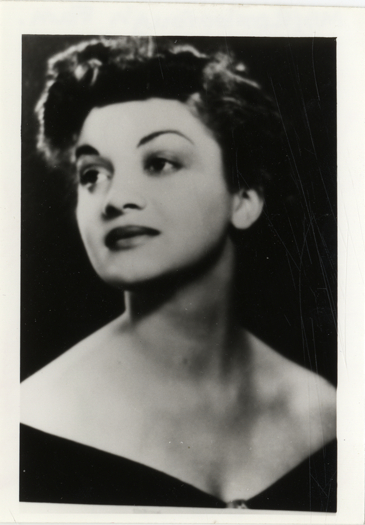
Hughes disapproved of “passing” on principle; his works on the subject emphasize the emotional cost. But Roxborough had already discovered the emotional cost of failure as a playwright. The rejection of her plays by critics and judges contrasted with the nearly incredible success of Uncle John’s golden boy. If making it as a black in America demanded masculine brute strength, she would flee to the genteel white world in which a woman’s arts would be appreciated.
Roxborough changed her hair color from raven black to auburn, eliciting a pun from columnist Boykin, “She’s just dye-ing to get away.” In her roadster she headed to Pasadena, looping through Mexico to test her high school and college Spanish and make herself sufficiently familiar with Hispanic culture that she could feign foreign origins if her racial background were questioned.
Roxborough illustrated what you could do if you were lightskinned and had enough money. From the autumn of 1937 on, most black reporters were never sure whether she was in Hollywood or New York, and her family wasn’t saying. On Christmas day, 1937, William Smallwood headlined his Afro-American column, “Elsie Roxborough Reported Living Incognito in Gotham”: “Though none of the metropolitan lads who pound typewriters for a living know it, Elsie Roxborough whom Detroit affectionately dubbed the colored Connie Bennett, has been living in Gotham for the past few months as Nordic-much to her family’s undisguised disgust. You can imagine poor La Roxborough shuddering each time she slips into an uptown subway train.”
Roxborough was so determined to succeed that she put blinders on and forged ahead despite the consequences. Others couldn’t “pass” but she could, and if passing was her only option, she would take it. Furthermore, passing was an adventure. It was exciting to play out the historic black American folk trick of “fooling ole massa” – to slip through to the white world and witness that no one could tell the difference. In her case the trick worked extra well: she rose to a position where she represented the epitome of Aryan beauty. She took the name Pat Rico, and for a while flourished as a model and owner of a modeling studio.
After less than a year in California, she moved to New York and lived “downtown,” but she did not abandon black life completely. She would go up to Harlem and be photographed in Bill “Bojangles” Robinson’s beautifully-appointed cocktail and supper club, the Mimo Club, on Seventh Avenue just below 132nd Street, when Uncle John and Joe Louis came to town. On 13 July 1938, when Langston Hughes sailed for Europe to attend a peace congress sponsored by the International Association of Writers for the Defense of Culture, his friends recognized the woman who reached the dock too late to say goodbye as the person in the picture in Hughes’ Harlem apartment.
By the summer of 1939, Roxborough – as “Pat Rico” – had a telephone number in New York and lived at 77 Washington Place in Greenwich Village. Under this name she published a story, “Charming Escort,” in the September 1939 Street and Smith’s Love Story magazine. In that story the heroine is a model torn between her attraction to a sensuous top-fashion photographer who uses her, and a more homespun photographer who helps her get established with good pictures of herself and introductions at the right studios. The theme of this wish-fulfillment fantasy is that the too-successful man does not understand the feelings of ‘the woman whose emotions he exploits. A racial analogy would be that the white American does not understand the feelings of the mulatto who lives beside him.
By the time World War II started, Roxborough had assumed a third new name, “Mona Manet,” and moved to a final residence, across the street from the future site of the United Nations Buildings. The 21 October 1943 issue of the New York Times says that Mona Manet was in charge of makeup and coiffures for the Times’s “Fashions of the Times” style show. And she had opened her modeling salon, Mona Manet, Inc., at 48 East 52nd Street, by 1944.
In February of 1946 a new, internationally flavored magazine, Fascination, was launched in New York by Hungarian emigre Geza Herczeg, who had won an Oscar in 1938 for writing The Life of Emile Zola for the screen. Elsie Roxborough/Mona Manet joined the staff, and wrote a column on new cosmetics in hyperbolic, artificial language. The high point of her ethnic deception is her description of a reception in Atlanta: “Your beauty editor had the thrill of her lifetime when she was commissioned as Beauty Stylist to do the make-up and hair-styling for Atlanta’s overwhelming “Fashionata of 1946″…. With us on the trip to Atlanta were 12 of New York’s most versatile models, selected because they had grace and acting ability as well as beauty….. Antoine’s Salon at Rich’s did the hairdos for me and kept the girls groomed for their many changes at each performance. We enjoyed plenty of good old Southern hospitality in that magnificent town of fabulous homes and exquisite gardens and clothes. Governor and Mrs. Arnall turned out for the very elegant opening night…. They say no one has been received as royally as our company since Clark Gable was down there for the Gone With the Wind premiere.”
